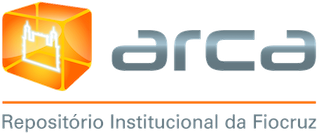Please use this identifier to cite or link to this item:
Type
ArticleCopyright
Open access
Collections
- IOC - Artigos de Periódicos [12776]
Metadata
Show full item record
HYDRODISSECTION IN THE CONSTRUCTION OF CONJUNCTIVAL FLAPS IN DOGS
Úlcera da córnea
Divulgação
Retalhos pediculares
Hidrodissecção conjuntival
Author
Affilliation
Program in Animal Science (PPGCA). São Luis, MA, Brasil.
Program in Animal Science (PPGCA). São Luis, MA, Brasil.
Universidade Estadual do Maranhao. Curso de Medicina Veterinária. São Luis, MA, Brasil.
Centro Universitário Maurício de Nassau (UNINASSAU), São Luís. Curso de Medicina Veterinária. São Luis, MA, Brasil.
Universidade Federal de Minas Gerais, Programa de Ciência Animal. Belo Horizonte, MG, Brasil.
Program in Animal Science (PPGCA). São Luis, MA, Brasil / Fundação Oswaldo Cruz. Instituto Oswaldo Cruz. Laboratório de Protozoologia e Imunomodulação. Rio de Janeiro, RJ, Brasil.
Universidade Estadual do Maranhao. Departamento de Patologia Veterinária. São Luis, MA, Brasil.
Universidade Estadual do Maranhao. Departamento de Ciências Clínicas Veterinárias. São Luis, MA, Brasil.
Program in Animal Science (PPGCA). São Luis, MA, Brasil / Universidade Estadual do Maranhao. Departamento de Ciências Clínicas Veterinárias. São Luis, MA, Brasil.
Program in Animal Science (PPGCA). São Luis, MA, Brasil.
Universidade Estadual do Maranhao. Curso de Medicina Veterinária. São Luis, MA, Brasil.
Centro Universitário Maurício de Nassau (UNINASSAU), São Luís. Curso de Medicina Veterinária. São Luis, MA, Brasil.
Universidade Federal de Minas Gerais, Programa de Ciência Animal. Belo Horizonte, MG, Brasil.
Program in Animal Science (PPGCA). São Luis, MA, Brasil / Fundação Oswaldo Cruz. Instituto Oswaldo Cruz. Laboratório de Protozoologia e Imunomodulação. Rio de Janeiro, RJ, Brasil.
Universidade Estadual do Maranhao. Departamento de Patologia Veterinária. São Luis, MA, Brasil.
Universidade Estadual do Maranhao. Departamento de Ciências Clínicas Veterinárias. São Luis, MA, Brasil.
Program in Animal Science (PPGCA). São Luis, MA, Brasil / Universidade Estadual do Maranhao. Departamento de Ciências Clínicas Veterinárias. São Luis, MA, Brasil.
Abstract
Background: Hydrodissection is a minimally invasive procedure that consists of injecting fluid into an anatomical space
to facilitate dissection during surgery. Although this procedure is employed in several areas of veterinary medicine, including
ophthalmology, there are no reports of the use of this maneuver in conjunctival procedures in dogs. The use of this
technique can facilitate the construction of conjunctival pedicle flaps, thereby improving the results. The purpose of this
work was to evaluate the use of hydrodissection in the construction of conjunctival pedicle flaps in dogs.
Materials, Methods & Results: The sample consisted of 20 eyes from 10 healthy dogs that had been subjected to elective
surgical procedures of ovariohysterectomy and orchiectomy. The dogs were divided into 2 groups; the 1st group of 10 eyes
underwent hydrodissection and the 2nd group of 10 eyes did not. All the patients underwent a complete ophthalmic examination
and assessment of their systemic conditions. The patients were then anesthetized and the procedures were performed
under a surgical microscope. In the group subjected to hydrodissection, the conjunctival flap was prepared by means of a
previous subconjunctival injection of 0.7 mL of 0.9% sodium chloride, followed by preparation of the flap. In the group
without hydrodissection, the flap was prepared by means of conventional divulsion using iris scissors. After producing the
conjunctival flaps, a conjunctival fragment was collected from both groups for histological analysis and evaluation of the
presence of the Tenon capsule. The operating time, degree of hemorrhage and ease of handling the conjunctiva in the intraoperative
period were evaluated. Postoperative evaluations were performed at 1, 7 and 14 days after surgery and included:
blepharospasm, conjunctival hyperemia and edema, which were classified as absent, mild, moderate or severe; tear production
was evaluated using the Schirmer test, and the appearance of the conjunctival scar was assessed based on photographs
taken in the postoperative period, and by a visual analogue scale, with healing classified as fair, good or excellent. The 2
groups showed no statistical difference in terms of operating time, bleeding, ease of handling and conjunctival divulsion.
A volume of 0.48 ± 0.12 mL of 0.9% sodium chloride was administered to the conjunctiva. Postoperative assessments of
hyperemia, blepharospasm, conjunctival edema, and tear production also did not differ statistically. Conjunctival scarring
was considered optimal until the 14th postoperative day, with no statistically significant difference between the 2 groups.
These results demonstrate that both maneuvers are effective in creating conjunctival flaps. The Tenon capsule could not
be identified in histological stains.
Discussion: The literature offers numerous descriptions of the use of hydrodissection in surgical procedures in humans in
order to facilitate dissection and reduce surgical duration and handling, thereby improving the clinical recovery of patients.
Conversely, this technique has not been described frequently in veterinary medicine, notably with respect to conjunctival
procedures. In this study, we demonstrated that conjunctival hydrodissection was perfectly feasible, contributing to the
divulsion and preparation of conjunctival flaps, thus proving to be a viable option for this type of procedure. The absence
of the Tenon capsule in the evaluated samples demonstrates that, in both groups, the techniques were effective in separating
them from the conjunctiva. It was therefore concluded that the hydrodissection technique is a feasible maneuver in the
construction of conjunctival flaps, providing a new option for surgeons, especially for novice ophthalmologists.
Keywords in Portuguese
OftalmologiaÚlcera da córnea
Divulgação
Retalhos pediculares
Hidrodissecção conjuntival


Share